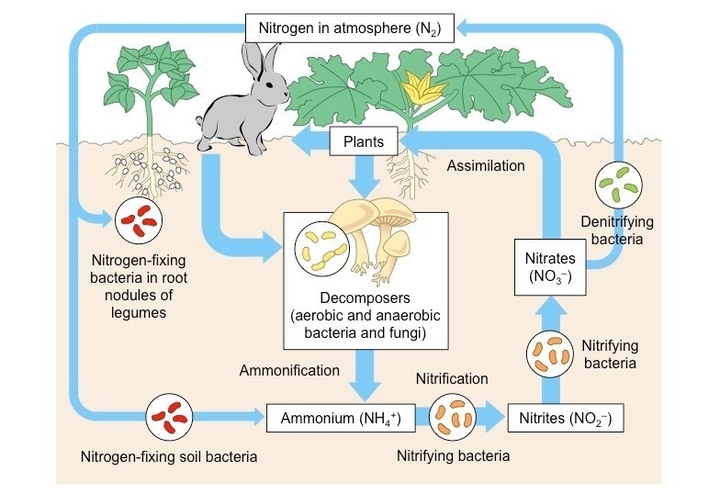- Home/
- Other State Exams (Other State PSC)/
- Article
The Nitrogen Cycle Notes in Hindi & English
By BYJU'S Exam Prep
Updated on: September 13th, 2023

Table of content
Nitrogen is important for living organisms to produce a number of complex organic compounds like amino acids, building blocks of proteins and nucleic acids (DNA and RNA). Though nitrogen is abundantly available in atmosphere as dinitrogen (N2), it can not be directly used by living organisms. It needs to be fixed before being utilised by the primary producers, i.e. plants. In the same way, before being released in the atmosphere in the end, it should again be converted in the form it originally was. This complete transfer of nitrogen from the atmosphere to living beings and then back to the atmosphere represents the nitrogen cycle.
Here in the article, all relevant details regarding nitrogen cycle are discussed below which are important for exams like UPSC, State PCS and other government examinations.
Nitrogen Cycle
The main processes involved in the nitrogen cycle-
Nitrogen fixation
It involves the conversion of gaseous nitrogen into ammonia, which can be used by plants. It can be done by following methods-
- Atmospheric fixation– This is done by lightening, combustion and volcanic activity.
- Industrial fixation– This is done in industries at high temperature and high-pressure where nitrogen molecule is broken into atomic nitrogen and combines with hydrogen to form ammonia. This is also known as Haber’s Process.
- Bacterial fixation– Symbiotic and free-living bacterias can combine atmospheric or dissolved nitrogen to form ammonia. Rhizobium in roots of the leguminous plant is a symbiotic bacterium and nostac, acetobacter is an example of free-living bacteria.
Note: Symbiotic relationships are those relationships where both the organisms are benefitted from each other. The classic example of symbiotic relationship can be seen as Lichen which shows mutualism between algae and fungi.

Nitrification
The process in which ammonia is converted into nitrates and nitrites by Nitrosomonas and Nitrococcus bacteria respectively. Nitrobacter can convert nitrate into nitrites.
Assimilation
Nitrogen fixed by plants is converted into organic molecules such as DNA, RNA etc. which forms plant and animal tissues.
Ammonification
- Nitrogenous waste products such as urea and uric acid produced by living organisms, waste products and dead remains of organisms are converted back into inorganic ammonia by the bacteria.
- Ammonifying bacterias like Clostridium, Pseudomonas, Streptomyces etc. help in this process.
Denitrification
- The conversion of nitrates back into gaseous nitrogen is called denitrification. This process is the reverse of nitrogen fixation.
- This can even lower the fertility of soil because nitrogen, which is essential for the growth of plants, is removed from the soil and is lost to the atmosphere.
More from Us:
Udaan: A 90-Day Course to Qualify GS Paper of UPPSC Prelims
Udaan: A 65-Day Course to Qualify GS Paper of BPSC Prelims
Check other links also:
Previous Year Solved Papers
Monthly Current Affairs
UPSC Study Material
Gist of Yojana
Daily Practice Quizzes, Attempt Here
Prep Smart. Score Better. Go Gradeup.


